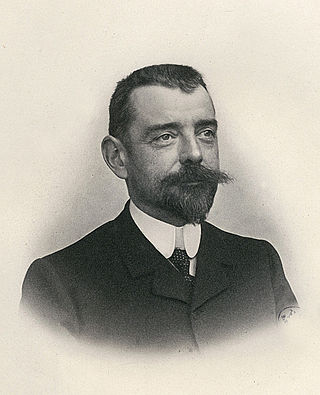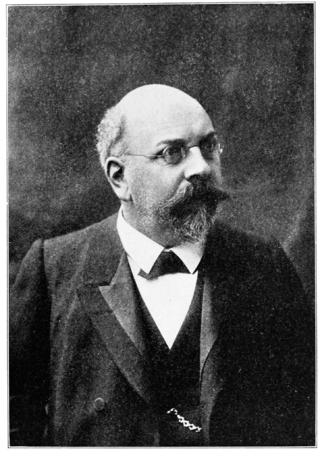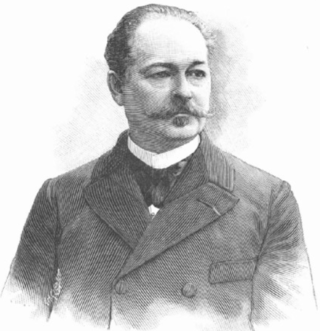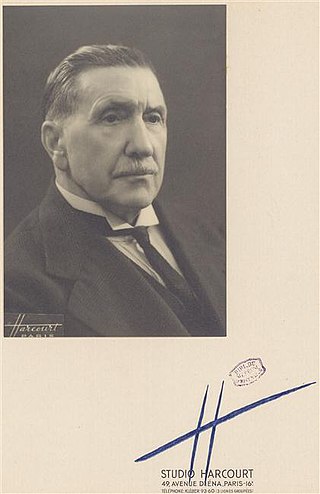Related Research Articles

Charles Louis Alphonse Laveran was a French physician who won the Nobel Prize in Physiology or Medicine in 1907 for his discoveries of parasitic protozoans as causative agents of infectious diseases such as malaria and trypanosomiasis. Following his father, Louis Théodore Laveran, he took up military medicine as his profession. He obtained his medical degree from University of Strasbourg in 1867.

Louis Marie Adolphe Olivier Édouard Joubin was a professor at the Muséum national d'Histoire naturelle in Paris. He published works on nemerteans, chaetognatha, cephalopods, and other molluscs.
Louis Antoine Marie Joseph Dollo was a Belgian palaeontologist, known for his work on dinosaurs. He also posited that evolution is not reversible, known as Dollo's law. Together with the Austrian Othenio Abel, Dollo established the principles of paleobiology.

Alfred Mathieu Giard was a French zoologist born in Valenciennes.
Félix Pierre Jousseaume was a French zoologist and malacologist. He studied medicine in Paris where he then practised. His thesis was Des Végétaux parasites de l'Homme. He participated in the founding of the Société zoologique de France and was President of that society in 1878.
Charles Henri Marie Flahault was a French botanist, among the early pioneers of phytogeography, phytosociology, and forest ecology. The word relevé for a plant community sample is his invention.
Auguste Jean Baptiste Chevalier was a French botanist, taxonomist, and explorer of tropical Africa, especially of French colonial empire in Africa that included Côte d'Ivoire. He also explored and collected plants in South America and tropical Asia. Chevalier was a prolific contributor to the knowledge of African plants, studying forest trees and their woods, grasses, and agricultural plants of the continent. Unlike other botanists who studied the plants of tropical Africa, Chevalier also ranged to the floral regions of the Sahara.
Duboscquella is a genus of dinoflagellates.
Gaston Milhaud was a French philosopher and historian of science.
Jean-Louis Fage was a French marine biologist and arachnologist.

Louis-Félix Henneguy was a French zoologist and embryologist born in Paris.
Émile-Eugène-Aldric Topsent was a French zoologist known for his research of sponges. He was born in Le Havre.
Camille François Sauvageau was a French botanist and phycologist.

The Observatoire océanologique de Banyuls-sur-Mer, also known as the Laboratoire Arago, is a marine station located in Banyuls-sur-Mer (Pyrénées-Orientales) on the Mediterranean coast of France. The marine station is made up of several joint research laboratories operated by UPMC-Paris 6 and the Centre National de la Recherche Scientifique (CNRS) and one administrative unit. The buildings and land are part of the UPMC-Paris 6 campus.

Jean Baptiste François René Koehler was a French zoologist best known for his research of echinoderms.
Maurice Neveu-Lemaire was a French physician and parasitologist.

Louis Euzet was a French parasitologist.

Jean Abel Gruvel was a French marine biologist known for his research of cirripedes.
Nematopsis (Nee-mah-top-cis) is a genus gregarine Apicomplexan of the family Porosporidae. It is an aquatic parasite of crustaceans with a molluscan intermediate host. Nematopsis has been distinguished from the similar genus Porospora by its resistant and encapsulated oocyst. Little molecular biology has been performed on the members of the Nemaptosis and species are described based on molluscan and crustacean hosts as well as oocyst structure. A total of 38 species have been described and are found all over the world.
Urbain-Louis-Eugène Léger was a French zoologist who was a specialist on aquatic protists, fish parasites, and fish farming. He served as a professor of zoology at Grenoble.
References
- ↑ Jean-Jacques Amigo, « Duboscq (Octave, Joseph, René) », in Nouveau Dictionnaire de biographies roussillonnaises, vol. 3 Sciences de la Vie et de la Terre, Perpignan, Publications de l'olivier, 2017, 915 p. ( ISBN 9782908866506)
- 1 2 Pôle Patrimoine scientifique de l'Université Montpellier 2 (biography)
- ↑ GBIF Harpella L. Léger & Duboscq, 1929.
- ↑ Google Books Selenococcidium Intermedium
- ↑ Harada, A.; Ohtsuka, S.; Horiguchi, T. (2007). "Species of the parasitic genus Duboscquella are members of the enigmatic Marine Alveolate Group I". Protist. 158 (3): 337–347. doi:10.1016/j.protis.2007.03.005. hdl: 2115/30140 . PMID 17560828.
- ↑ WorldCat Search publications
- ↑ International Plant Names Index. Duboscq.